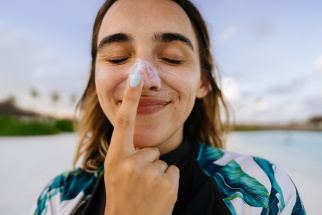January 2022
What You Don’t Know About Skin Cancer Can Hurt You
Skin cancer affects more Americans than any other malignancy. In fact, nearly 1 in 5 will develop it. But a new survey finds huge gaps in public knowledge about risk factors.

The American Academy of Dermatology recently asked 1,000 U.S. adults basic questions about skin cancer, tanning, and sun protection. About one-third flunked the test.
Among the troubling results:
-
31% did not know tanning causes skin cancer
-
53% weren’t aware shade can protect you from the sun’s harmful rays
-
47% falsely believed having a base tan prevents sunburns, or weren’t sure
The biggest misunderstandings occurred among younger adults. That includes Gen Z—born after 1996—and millennials, those born between 1981 and 1996. Unfortunately, research suggests indoor tanning and sunburns at younger ages increase risk later.
The myth of a healthy glow
Tanned skin is not a sign of vitality. In fact, a bronze hue is the body’s attempt to protect itself. Experts now know nearly all skin cancers result from too much exposure to ultraviolet (UV) light.
Many skin cancers are curable. However, melanoma—the deadliest type—is on the rise. About 106,000 Americans will be diagnosed with melanoma this year. Again, most cases are linked to UV exposure.
Stay skin-safe all year round
The risks don’t go away in fall and winter. Whatever the season, sunburn can still occur on cloudy days. And snow can reflect harmful UV rays.
Many people see tanning beds as a safe source of vitamin D in colder months. An estimated 7.8 million adults use them. But in fact, artificial UV rays from beds and lamps may be even more harmful than natural ones.
To prevent skin cancer, get vitamin D from foods like fatty fish, milk, and orange juice. Wear water-resistant sunscreen with a sun protection factor (SPF) of 30 or higher and broad-spectrum protection, even when it’s cloudy. Prefer a tanned look? Use a self-tanning lotion, foam, or spray instead.